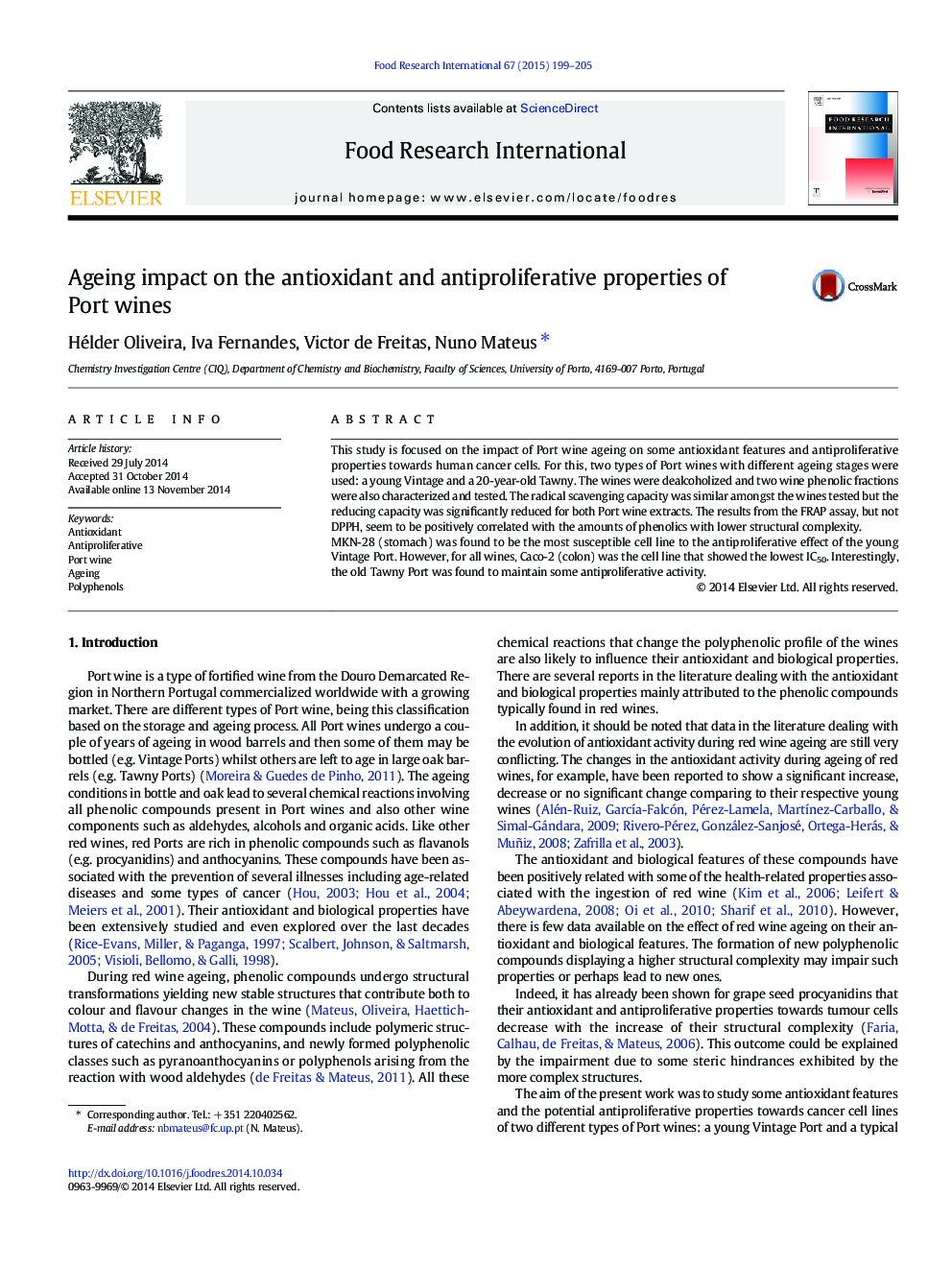| Article ID | Journal | Published Year | Pages | File Type |
|---|---|---|---|---|
| 6396054 | Food Research International | 2015 | 7 Pages |
â¢The red table wine showed a much higher reducing capacity than the Port wines.â¢The FRAP assay, but not DPPH, seems to be correlated with the levels of phenolics.â¢The Vintage Port was the most effective in inhibiting MKN-28 cell proliferation.â¢Procyanidins from fractions FII seem to play a role in the antiproliferative action.â¢The 20-year-old Tawny Port still showed some bioactivity in all cell lines used.
This study is focused on the impact of Port wine ageing on some antioxidant features and antiproliferative properties towards human cancer cells. For this, two types of Port wines with different ageing stages were used: a young Vintage and a 20-year-old Tawny. The wines were dealcoholized and two wine phenolic fractions were also characterized and tested. The radical scavenging capacity was similar amongst the wines tested but the reducing capacity was significantly reduced for both Port wine extracts. The results from the FRAP assay, but not DPPH, seem to be positively correlated with the amounts of phenolics with lower structural complexity.MKN-28 (stomach) was found to be the most susceptible cell line to the antiproliferative effect of the young Vintage Port. However, for all wines, Caco-2 (colon) was the cell line that showed the lowest IC50. Interestingly, the old Tawny Port was found to maintain some antiproliferative activity.
